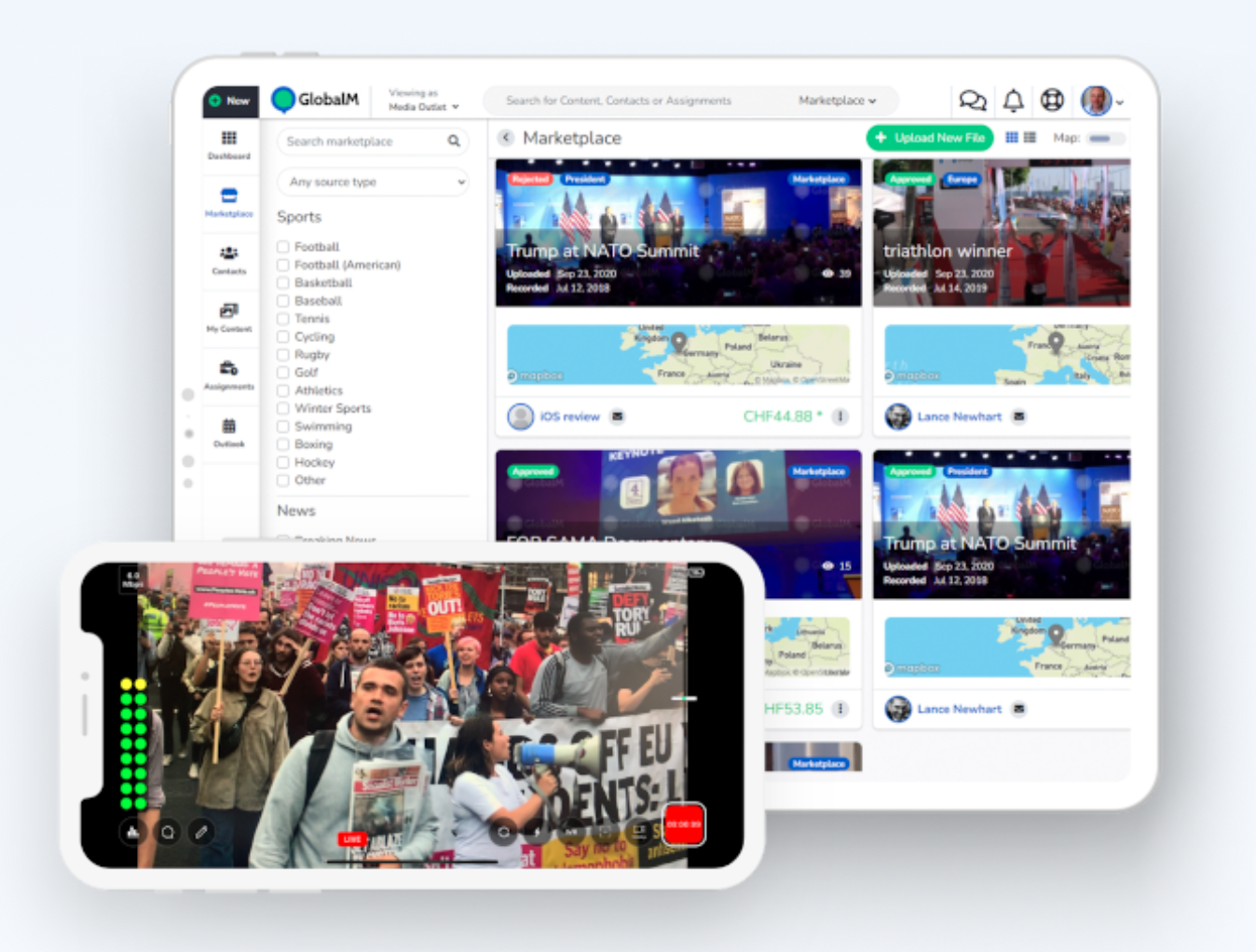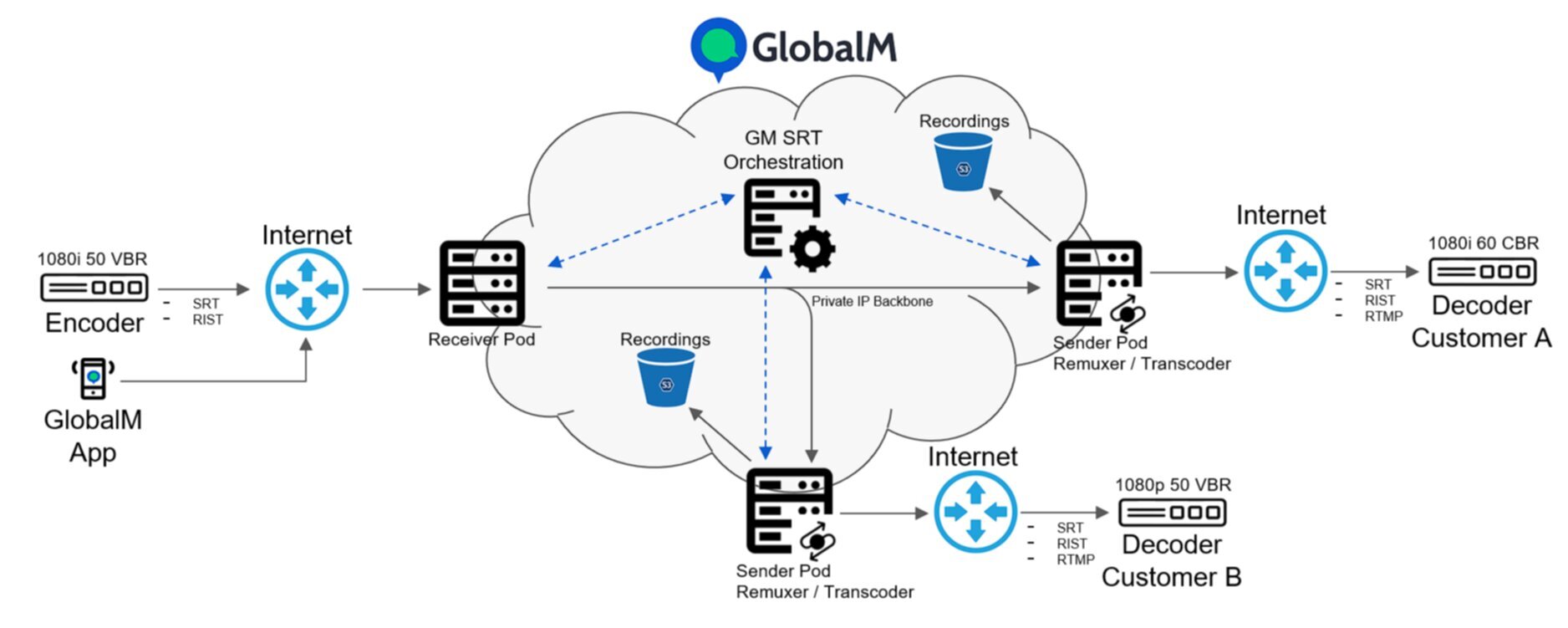GlobalM Enables Drag-and-Drop Feed Management
CEO/CTO Paul Calleja describes the system’s orchestrator as the secret sauce
Story Highlights
Sports-event rightsholders are always looking for new ways to remotely tap into feeds and other sports productions. With a multitude of formats, bitrates, and means of encoding and decoding content, juggling the various delivery requirements is a major challenge.
That’s one reason GlobalM’s enhanced Software Defined Video Network (SDVN) is interesting: it allows users to control delivery of content feeds via a drag-and-drop interface to connect users and a drop-down menu to handle format, frame rate, and more.

GlobalM’s Software Defined Video Network (SDVN) allows users to control delivery of content feeds via a drag-and-drop interface.
“We can get people without a PhD in cloud operations to start using the cloud for contribution distribution and remote production,” says GlobalM CEO/CTO Paul Calleja. “GlobalM is designed especially for the broadcast industry and uses a sophisticated orchestrator to automate all the cloud service operations.”
GlobalM was used by the BBC to deliver the King Charles III Coronation to broadcasters in North and South America.
“The BBC was transmitting the signal from Broadcasting House in 1080i50,” notes Calleja, “but the broadcasters in the Americas all received it in 1080i59.94, thanks to GlobalM’s cloud transcoding solution.”
GlobalM can be used with any SRT-, RIST-, or RTMP-compliant encoder or decoder, as well as with the integrated SRT mobile app for iOS and Android. Its new enhanced cloud media-processing (transcoding/re-multiplexing) capabilities use NVIDIA GPUs, the NVIDIA DeepStream SDK, and the NVIDIA Video Codec SDK, offering complete cloud-based workflows for media contribution, distribution, and remote production. Users can transcode to many formats from one input, and the network responds to real-time demand and stream-distribution scales without losing the quality of a single stream. According to Calleja, the only limitation to the number of sources and destinations that can be in play is the available capacity in AWS (there are plans for GlobalM to be used on other cloud platforms in the future).
“We’ve just been granted our patents for the way we orchestrate our network and how we can scale SRT or RIST to multiple takers, and it can also be RTMP,” he adds. “And we can remux, transcode, change frame rates with any encoder and decoder. The secret sauce is our orchestrator, which drives everything.”
The system also allows control of the audio signals and converting them to a format compatible with the user’s workflow.
“The person on the receiving side can get access and make sure that what they are receiving is correct,” explains Calleja. “They can see the incoming feed as a source on their dashboard and configure the endpoint themselves. A news agency, for example, has loads of endpoints; they can group them. Soon we will have a feature to allow the outputs to be grouped like a video matrix: grab a source as a salvo, drop it in, and it will hit 100 endpoints at the same time. It’s a big matrix in the cloud that can handle standards, conversion, crossconversion as well.”
To further enhance the GlobalM workflow, advanced exception monitoring allows users to detect and handle exceptional issues related to data packets on a specific segment. Real-time monitoring ensures immediate detection and response to issues, and traffic analysis identifies unusual spikes or inconsistent patterns. These monitoring updates enhance the SDVN’s reliability, security, and performance.

